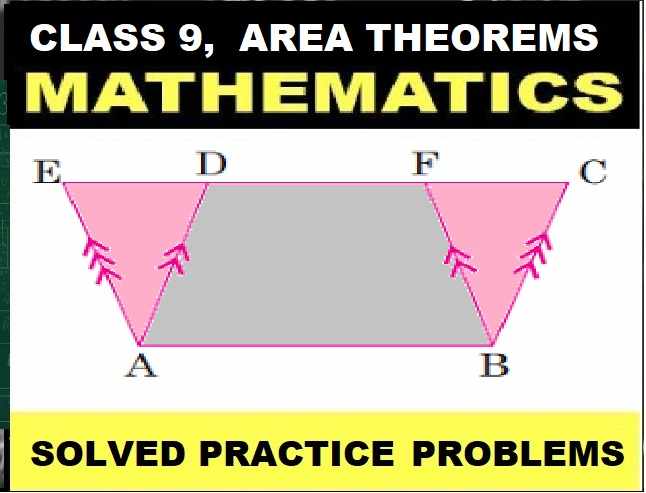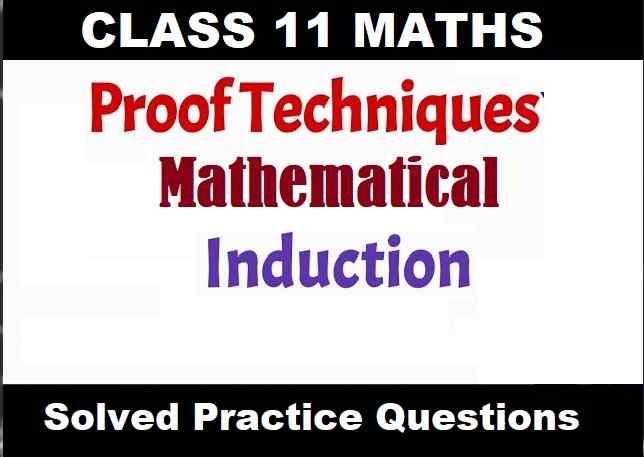Compound Interest Class 9 OP Malhotra Exe-2B ICSE Maths Solutions Ch-2 We Provide Step by Step Solutions / Answer of Questions on compound Interest using formula OP Malhotra Maths . Visit official Website CISCE for detail information about ICSE Board Class-9 Mathematics.

Compound Interest Class 9 OP Malhotra Exe-2B ICSE Maths Solutions Ch-2
| Board | ICSE |
| Publications | S Chand |
| Subject | Maths |
| Class | 9th |
| Chapter-2 | Compound Interest |
| Writer | OP Malhotra |
| Exe-2B | Using Formula |
| Edition | 2025-2026 |
Exercise- 2B
Compound Interest Class 9 OP Malhotra ICSE Maths Solutions Ch-2
Que-1: Principal = ₹ 625, Rate of interest = 4 % p.a., Time (in years) = 2.
Sol: Principal (P) = ₹ 625
Rate (R) = 4% p.a.
Period (n) = 2 years
∴ Amount (A) = P(1 + (R/100))^n
= ₹ 625 (1 + (4/100))²
= ₹ 625 (1 + (1/25))² = 625 (26/25)²
= ₹ 625 x (26/25) x (26/25) = ₹ 676
and C.I. = A – P
= ₹ 676 – 625
= ₹ 51
Que-2: Principal = ₹ 8000, Rate of interest = 15 % p.a., Time (in years) = 3.
Sol: Principal (P) = ₹ 8000
Rate (R) = 15% p.a.
Period (n) = 3 years
∴ Amount (A) = P(1+(R/100))^n
= ₹ 8000 (1+(15/100))³
= ₹ 8000 (23/20)³
= ₹ 8000 x (23/20) x (23/20) x (23/20) = ₹ 12167
∴ C.I. = A – P
= ₹ 12167 – 8000
= ₹ 4167
Que-3: Principal = ₹ 1000, Rate of interest = 10 % p.a., Time (in years) = 3.
Sol: Principal (P) = ₹ 1000
Rate (R) = 10% p.a.
Period (n) = 3 years
∴ Amount (A) = P (1+(R/100))^n
= ₹ 1000 (1+(10/100))³
= ₹ 1000 (11/10)³
= ₹ 1000 x (11/10) × (11/10) × (11/10) = ₹ 1331
∴ C.I. = A – P
= ₹ 1331 – 1000
= ₹ 331
Que-4: Principal = ₹ 8000, Rate of interest = 10 % half yearly, Time (in years) = 1*(1/2).
Sol: Principal (P) = ₹ 8000
Rate (R) = 10% p.a. (half-yearly) or 5% half year
Period (n) = 1*(1/2) years = 3 half years
∴ Amount (A) = P (1+(R/100))^n
= ₹ 8000 (1+(5/100))³
= ₹ 8000 x (21/20)³
= ₹ 8000 x (21/20) x (21/20) x (21/20) = ₹ 9261
∴ C.I. = A – P
= ₹ 9261 – 8000
= ₹ 1261
Que-5: Principal = ₹ 700, Rate of interest = 20 % half yearly, Time (in years) = 1*(1/2).
Sol: Principal (P) = ₹ 700
Rate (R) = 20% p.a. (half yearly) or 10% half yearly
Period (n)= 1 12 years or 3 half years
∴ Amount (A) = P (1+(R/100))^n
= ₹ 700 (1+(10/100))³
= ₹ 700 (11/10)³
= ₹ 700 x (11/10) × (11/10) × (11/10)
= ₹ 931710 = ₹ 931.70
and C.l. = A – P
= ₹ 931.70 – 700
= ₹ 231.70
Que-6: Sangeeta lent ₹ 40960 to Amar to purchase a shop at 12.5% per annum. If the interest is compounded semi-annually, find the interest paid by Amar after 1*(1/2) years.
Sol: Amount of loan (P) = ₹ 40960
Rate (R) = 12.5% = 12*(1/2) = 25/2 % p.a.
= 25/4 % semi annually
Period (n) = 1*(1/2) years or 3 half years
∴ Amount (A) = P (1+(R/100))^n
= ₹ 40960 {1+(25/(4×100))}³
= ₹ 40960 (17/16)³
= ₹ 40960 x (17/16) x (17/16) x (17/16)
= ₹ 49130
∴ C. Interest = A – P
= ₹ 49130 – 40960
= ₹ 8170
Que-7: Sudhir lent ₹ 2000 at compound interest at 10% payable yearly, while Prashant lent ₹ 2000 at compound interest at 10% payable half-yearly. Find the difference in the interest received by Sudhir and Prashant at the end of one year.
Sol: Incase of Sudhir,
Amount lent (P) = ₹ 2000
Rate (R) = 10% p.a.
Period = 1 year
∴ Interest = PRT/100
= ₹ (2000×10×1)/100 = ₹ 200
Incase of Prashant,
Principal (P) = ₹ 2000
Rate (R) = 10% p.a. or 5% half-yearly
Period (n) = 1 year or 2 half years
∴ Amount (A) = P (1+(R/100))^n
= ₹ 2000 (1+(5/100))²
= ₹ 2000 x (21/20)²
= ₹ 2000 x (21/20) x (21/20) = ₹ 2205
∴ C. Interest = A – P = ₹ 2205 – 2000 = ₹ 205
Difference in their interest paid = ₹ 205 – 200 = ₹ 5
Que-8: Flow much will ₹ 25000 amount to in 2 years at compound interest, if the rates for the successive years be 4 and 5 per cent per year ?
Sol: Principal (P) = ₹ 25000
Period (n) = 2 years
Rate for the first year (R1) = 4% p.a.
and for the second year (R2) = 5%
∴ Amount = P {1+((R1)/100)}}{1+((R2)/100))}
= ₹ 25000 (1+(4/100))(1+(5/100))
= ₹ 25000 x (26/25) x (21/20)
= ₹ 27300
Que-9: Umesh set up a small factory by investing ₹ 40,000. During the first three successive years his profits were 5%, 10% and 15% respectively. If each year the profit was on previous year’s capital, calculate his total profit.
Sol: Investment of Umesh (P) = ₹ 40,000
Period (n) = 3 years
Rate of profit for the first year (r1) = 5%
for second year (r2) = 10%
and for third year (r3) = 15%
∴ Total amount after 3 years
= P {1+((r1)/100)}+{1+((r2)/100)}{1+((r3)/100)}
= 40000 (1+(5/100))(1+(10/100))(1+(15/100))
₹ 40,000 x (21/20) x (11/10) x (23/20) = ₹ 53130
Profit = A – P = ₹ 53130 – 40000
= ₹ 13130
Que-10: Himachal Pradesh State Electricity Board issued in July 1988, 20 year bonds worth ₹ 6.25 crore. The issue price of each bond is ₹ 100 and it carries an annual interest of 11.5%, compounded half-yearly. Jasbir invested ₹ 5000 in these bonds. Find the amount that he gets on maturity of the bonds in 2008.
Sol: amount of total bonds = ₹ 6.25 crore
and price of each bond = ₹ 100
Rate of interest (r) = 11.5% p.a. (half-yearly)
or 5.75% half-yearly
Jasbir’s investment = ₹ 5000
Period (n) = 2008 – 1988 = 20 years = 40 half years
∴Amount of the bonds after 40 half years
= P (1+(r/100))^n
= ₹5000(1+(5.75)/100)^40
= ₹ 5000 (1 + 1.0575)^40
= ₹ 5000 x 9.35869 = ₹ 46793.45
∴ Maturity value of the bonds = ₹ 46793.45
Que-11: A district contains 64000 inhabitants. If the population increases at the rate of 2*(1/2) % per annum, find the number of inhabitants at the end of 3 years.
Sol: Population of a district (P) = 64000
Rate of increase (R) = 2*(1/2) % p.a.
Period (n) = 3 years
∴ Population after 3 years = P (1+(R/100))^n
= 64000 {1+(5/(2×100))}³
= 64000 x (41/40)³
= 64000 x (41/40) × (41/40) × (41/40)
= 68,921.
Que-12: The Nagar Palika of a certain city started campaign to kill stray dogs which numbered 1250 in the city. As a result, the population of stray dogs started decreasing at the rate of 20% per month. Calculate the number of stray dogs in the city three months after the campaign started.
Sol: In a city no. of stray dogs in the beginning (P) = 1250
Rate of decrease (R) = 20% per month
Period (n) = 3 months
∴ Number of stray dogs after 3 months
= P (1−(R/100))^n
=1250 (1−(20/100))³
= 1250 (1/2)³
= 1250 x (4/5) x (4/5) x (4/5)
= 640.
Que-13: 8000 blood donors were registered with a charitable hospital. Some student organizations started mobilizing people for this noble cause. As a result, the number of donors registered, increased at the rate of 20% per half year. Find the total number of new registrants during 1*(1/2) years.
Sol: No. of blood donors in the beginning (P) = 8000
Rate of Increase = 20% per half year
Period (n) = 1*(1/2) years or 3 half year
∴ Increased donors after 3 half years
= P (1+(R/100))^n
= 800 (1+(20/100))³
= 8000 x (6/5)³
= 8000 x (6/5) x (6/5) x (6/5)
= 13824
∴ Net increase in donors = A – P
= 13824 – 8000
= 5824.
— : End of Compound Interest Class 9 OP Malhotra Exe-2B ICSE Maths Ch-2 Step by Step Solutions :–
Return to :– OP Malhotra S Chand Solutions for ICSE Class-9 Maths
Thanks
Please Share with Your Friends


